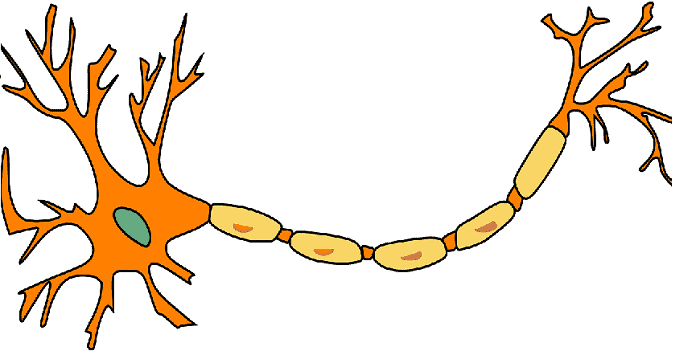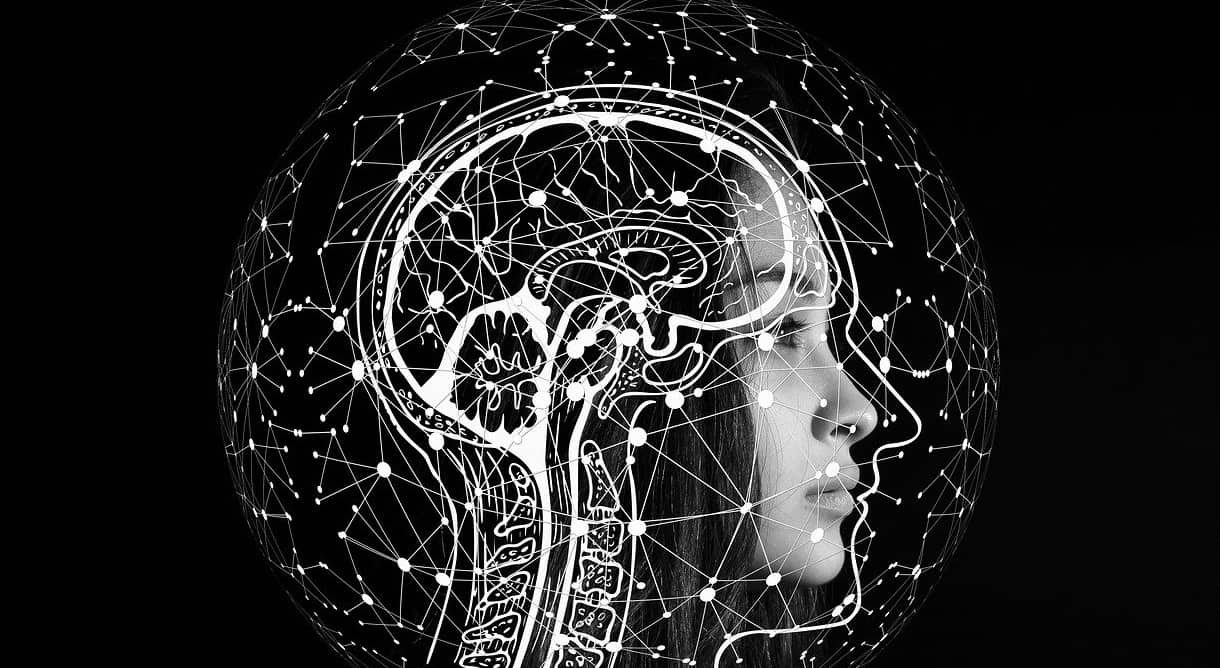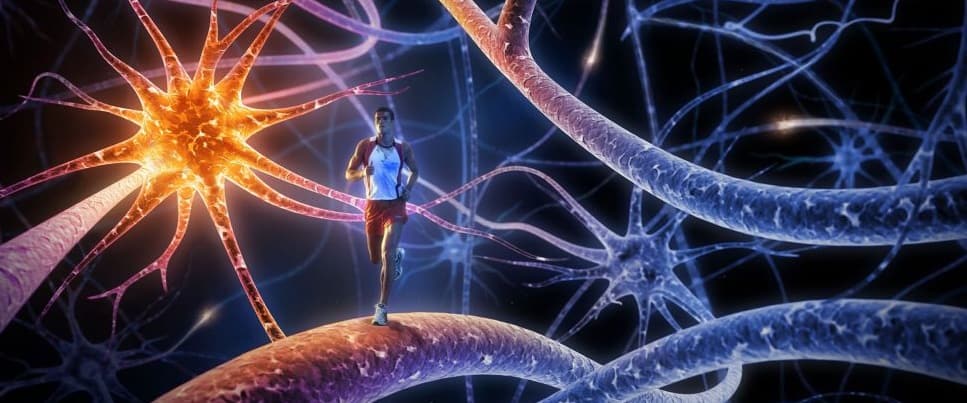A human being has five sense organs in a body; they are Nose, Eyes, Ears, Skin & Tongue. These five sense organs are also called receptors as they receive; they are sensitive to a stimulus like light, heat, smell, etc. These receptors send messages to the brain or spinal cord, and then the effectors react accordingly.
Control And Coordination Class 10 Notes – Revision
The message transmitted by any of these five sense organs is transmitted to the brain in the form of an electric impulse. The moment these receptors receive a stimulus, they are further carried to the brain and spinal cord by motor nerves.
It is another type of nerve in the human body. Followed by the motor nerves, the effectors respond to the stimulus according to the brain or spinal cord’s message. The muscles and glands in the human body are known as receptors.
The nervous system coordinates each and every activity in a human body; the thinking and action of a human body are controlled by the nervous system. The nervous system passes information from one internally to other organs.
While playing, the coordination of your eyes, hands, and legs are all controlled by the nervous system; while catching a ball which is high up in the air, the coordination of your eyes and your hands are very important to catch the ball, some of the most important activities are controlled by the nervous system in a human body. The nervous system uses both electrical and chemical impulses to send and receive messages.
The Neurons

Neurons are the largest cell in the human body. Our nervous system is made up of cells, and the cells that make up the nervous system are called neurons. The main function of a neuron is to transmit messages in the body so that the body can react to the situation accordingly. There are three main parts of a neuron, they are:
- Cell Body
- Dendrites
- Axon
The cell body consists of cytoplasm and a nucleus; there are many long and short fibers coming out of the neuron, the short fibers are called dendrites, and the long fibers are called an axon. Dendrites receive the information, and then the message is further passed to the cell body, and at the end, it’s transmitted to the axon. There is a small gap between the neurons, which is called a synapse; it is a junction between the neurons, which helps to transmit the message from one neuron to another. The messages that are transmitted through the nervous system are in the form of electrical impulse, which is also called nerve impulse.
There are three types of neurons, namely:
- Sensory Neurons
- Motor Neurons
- Relay Neurons
The role of the sensory neurons is to transmit the messages from receptors to the central nervous system that includes the brain and the spinal cord, whereas on the other hand, the motor neurons carry messages from the central nervous system to the effectors, which then react accordingly.
The receptors of our sense organs are in touch with the dendrites; when the stimulus acts on the receptor, a chemical reaction occurs, which later produces an electrical impulse. Then the message is carried further to the cell body and later on to the axon.
When the electric impulse reaches the synapse, which is the junction between two neurons, another chemical reaction takes place, and then another electrical impulse is produced, which is further carried on by the dendrites of another neuron.
This process of transmitting the message continues until it reaches the relay neurons, which are located in the central nervous system, which includes the brain and the spinal cord.
These are some of the important points for the control and coordination class 10 notes.
Main Organs Of The Human Nervous System
There are three main organs in the human nervous system; they are:
- Brain
- Spinal Cord
- Nerves
The brain is one of the most important parts of a vertebrate and an invertebrate animal; the human being is a vertebrate animal. The brain is located inside the skull near the body’s viral sense organs like the nose, eyes, and ears. The brain is one of the most complex parts of the human body, the cerebral cortex contains around 14-16 billion neurons, and the cerebellum contains approximately 55-70 billion neurons.
The spinal cord’s upper portion is connected to the brain and is one of the most important parts of the human body, and the central nervous system, both the brain and spinal cord make up the central nervous system.
On the other hand, nerves are distributed all over the body to receive and transmit messages to different parts of the human body.
There are three types of nerves, namely:
- Cranial Nerves
- Spinal Nerves
- Visceral Nerves
Cranial nerves are pairs of nerves that are connected to the brain, neck, and trunk of a human body. There are twelve types of cranial nerves; they are ranked from one to twelve according to the closest position to the head:
- Olfactory Nerve
- Optic Nerve
- Oculomotor Nerve
- Trochlear Nerve
- Trigeminal Nerve
- Abducens Nerve
- Facial Nerve
- Vestibulocochlear Nerve
- Glossopharyngeal Nerve
- Vagus Nerve
- Accessory Nerve
- Hypoglossal Nerve
There are 31 different types of spinal which are located on both sides of the vertebral column. Spinal nerves are one of the most important parts of the peripheral nervous system.
Sensory nerves carry from the body to the brain, and the spinal and motor nerves carry messages brain and spinal cord to the human body.
Operation Of The Nervous System
The nervous system in our body carries the message to the brain, and then the brain instructs the action to be taken for that particular part of the body, For, e.g., When we touch a hot plate brain instructs our hand move away from the hot plate, whereas on the other hand there are some actions that are not physical, for example: when light enters our eyes the pupil shrinks, and when we enter a dark room the pupil of expands so as to allow more and more light to enter the eyes.
There are two main parts of the nervous system:
- Central Nervous System
- Peripheral Nervous System
The peripheral nervous system also has two parts, namely:
- Autonomic Nervous System
- Voluntary Nervous System
The peripheral nervous system connects the central nervous system to other parts of the body like limbs and skin; the peripheral nervous system can be called the division of the central nervous system. Spinal nerves extend from the central nervous system to various parts of the body.
Reflex Action And Reflex Arc
Reflex action is those actions which are not under the control of the brain. Reflex action is taken by the body to protect itself from injury or damage; for example, we move our hand away if we unknowingly touch a hot plate. In a reflex action, the same kind of stimuli causes the same action, for example, sneezing, coughing, etc.
The moment we enter a dark room, the pupil in our eyes expands so that more and more light can enter into our eyes, and the moment we enter a room which is lit up by a tube light then the pupil in our eyes shrinks so as to adjust the amount of light entering into our eyes.
Effectors Causing Action Or Movement
The affected muscle causes an action or a movement because the spinal cord’s motor nerve impulse and brain reach the effector organ.
The moment when the muscle cells contract, it causes muscles to contract, which further pulls on the bones, and that’s how the movement of our limbs takes place.
Autonomic Nervous System
The autonomic nervous system connects to our body’s smooth muscles like lungs, heart, kidneys, glands, skin, etc.
Voluntary Nervous System
The voluntary nervous system is in conscious control of our brain, and therefore the activities performed by the human being are voluntary, for example, lifting up a thing, writing, throwing a thing, etc. The voluntary nervous system helps us take voluntary actions.
The voluntary nervous system and the autonomic nervous system are very important for the control and coordination class 10 notes.
Central Nervous System
The central nervous system’s most basic and important function is to respond to the message received by the motor neuron.
The Human Brain

The brain is the central part of the human body; it is located in the skull. There is a bony structure inside the skull that protects the brain; it is called the cranium, and there are three membranes that also protect the brain; it is called meninges. There is a space between the meninges, which is filled with a fluid to prevent the brain from shocks; this fluid is called cerebrospinal fluid.
There are thee parts of the brain, namely:
- Forebrain
- Midbrain
- Hindbrain
The forebrain includes the cerebrum, the midbrain does not have any further division, and the hindbrain includes pons, cerebrum, and medulla. The cerebrum is the most important part of the brain as all the actions, reactions, and coordination is controlled by the cerebrum. Things such as learning, thinking, intelligence, etc., are all controlled and performed by the cerebrum. In a nutshell, all the voluntary actions are controlled and coordinated by the cerebrum. On the other hand, the medulla performs all the involuntary functions of the body, such as breathing.
The cerebrum also controls the balance of the human body, and also all the reflex action of the body is controlled by the cerebrum.
Spinal Cord
The spinal cord extends downwards from the medulla; it is enclosed in a bony structure called vertebrae. There are a total of 31 kinds of nerves in the spinal cord; the membrane called meninges also surrounds the spinal cord.
These are some of the important points of the control and coordination class 10 notes. Topics covered:
- Nervous system parts
- Types of the nervous system
- Nervous system function
- Nervous system meaning
Frequently Asked Questions
Q1. What are the two types of control and coordination?
Ans. Nervous and hormonal are the two types of control and coordination.
Q2. What are control and coordination?
Ans. Control means to restrain something, to stop and start something. Coordination means to work in coordination with something.
Q3. What is the coordination of the nervous system?
Ans. Participation of the sense organs is involved in the coordination of the nervous system.
Q4. What are the types of nerves in our body?
Ans. There are three types of nerves in the human body:
- Sensory Nerves
- Autonomic Nerves
- Motor Nerves
Q5. Which part of the body is responsible for control and coordination?
Ans. Central Nervous System (CNS) is responsible for control and coordination.
